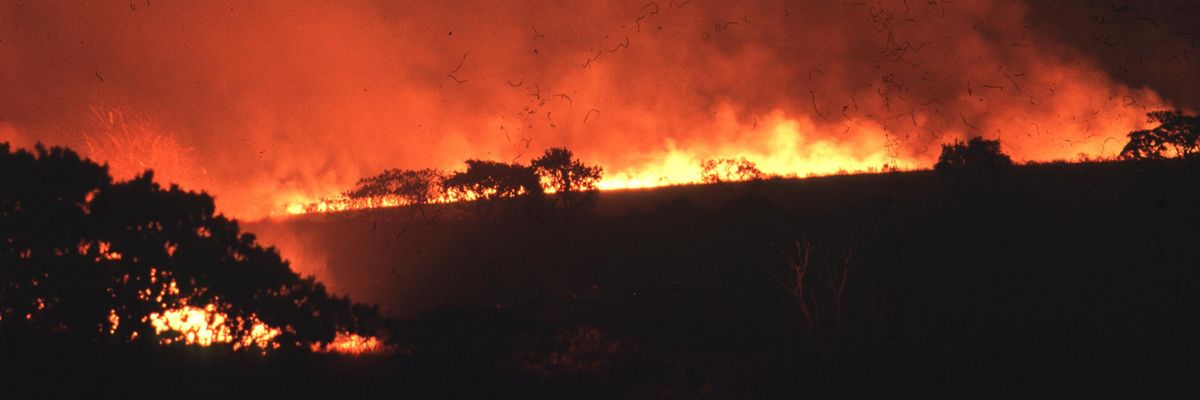Deforestation in Brazil's vital Cerrado region jumped by 43% in 2023 compared to 2022, the highest level since deforestation measurements began in 2019.
The news, released by Brazil's National Institute for Space Research this month, came as deforestation in the more widely known Amazon rainforest fell by nearly 50% in 2023. President Luiz Inácio Lula da Silva has promised to end deforestation by 2030, but environmental campaigners say agriculture in the Cerrado could undermine that goal.
"Lula's sacrifice of the Cerrado to beef and soy production is a major stain on his environmental credentials, and needs to be reversed and rectified urgently," Mighty Earth senior director Alex Wijeratna told the Financial Times. "The Cerrado savanna is being massively overlooked in Brazil and by the global community."
Brazil's Cerrado is the most biodiverse grassland ecosystem in the world, hosting 5% of all plant and animal species, according to WWF. The roughly 200 mammal species that live there include giant anteaters and armadillos. It is also home to 860 species of birds, 1,200 species of fish, and 90 million species of insects. Almost half of its more than 11,000 species of plants only grow there and are important to the survival and culture of local communities.
Beyond providing biodiversity, the savanna is important for Brazil's water system. It provides the spring for six of the country's 12 most important hydrological regions. Globally, it, like the Amazon, is an important carbon sink. It is home to shorter trees with vast underground root systems that may keep as many as 118 tons of carbon per acre out of the atmosphere.
"If destruction of the Cerrado is not stopped, the global commitment to cap global warming at 1.5°C will become unattainable," WWF said.
"Unlike the Amazon where prevention can be done via law enforcement, in the Cerrado incentives have to be created for landowners to give up their right to deforest."
Despite its ecological importance, the Cerrado has not received the same global attention as the Amazon, and experts say this has hampered conservation efforts.
"Internationally, the Cerrado is not very well known. If it had a name like the Amazon, we would have more (public) policies that benefit the conservation of the biome," Ane Alencar, science director at the Amazon Environmental Research Institute (APIM), toldThe Associated Press.
Alencar said the Cerrado is currently harder to protect because of the laws in place. In the Amazon, Lula's government had success by cracking down on illegal logging, ranching, and mining, the Financial Times explained.
But in the Cerrado, most deforestation occurs on private land, and a significant amount of it is currently legal, Alencar explained. While landowners in the Amazon may only clear 20% of the trees on their property, landowners in the Cerrado may clear 65% to 80%. The Amazon also has more protected nature reserves and Indigenous territories.
"In many cases, the suppression of native vegetation is allowed by the forest code. So, unlike the Amazon where prevention can be done via law enforcement, in the Cerrado incentives have to be created for landowners to give up their right to deforest," APIM executive director André Guimarães told the Financial Times.
Deforestation in the Amazon soared to its highest level in 12 years under right-wing Brazilian President Jair Bolsonaro, according to BBC News. Bolsnaro favored extractive industries over conservation and Indigenous rights, while Lula has promised to safeguard the forest. In 2023, 5,153 square kilometers of forest were lost, compared to 10,278 square kilometers in 2022. Officials said it was the lowest deforestation rate in five years.
In the Cerrado, meanwhile, 7,852 square kilometers of vegetation were lost in 2023, AP reported.
"We saw some important victories on the environment in 2023. The significant reduction in deforestation in the Amazon was a highlight," Mariana Napolitano of WWF-Brasil told Agence France-Presse.
"But unfortunately we aren't seeing the same trend in the Cerrado... That is harming the biome and the extremely important ecosystem services it provides," Napolitano added. "And we saw the impact at the end of the year, with extremely high temperatures."

